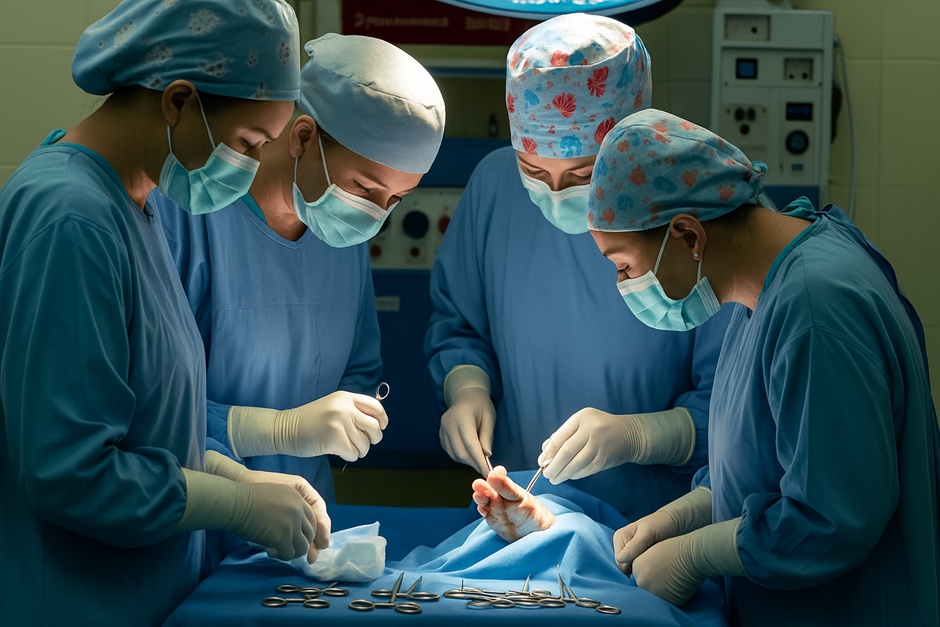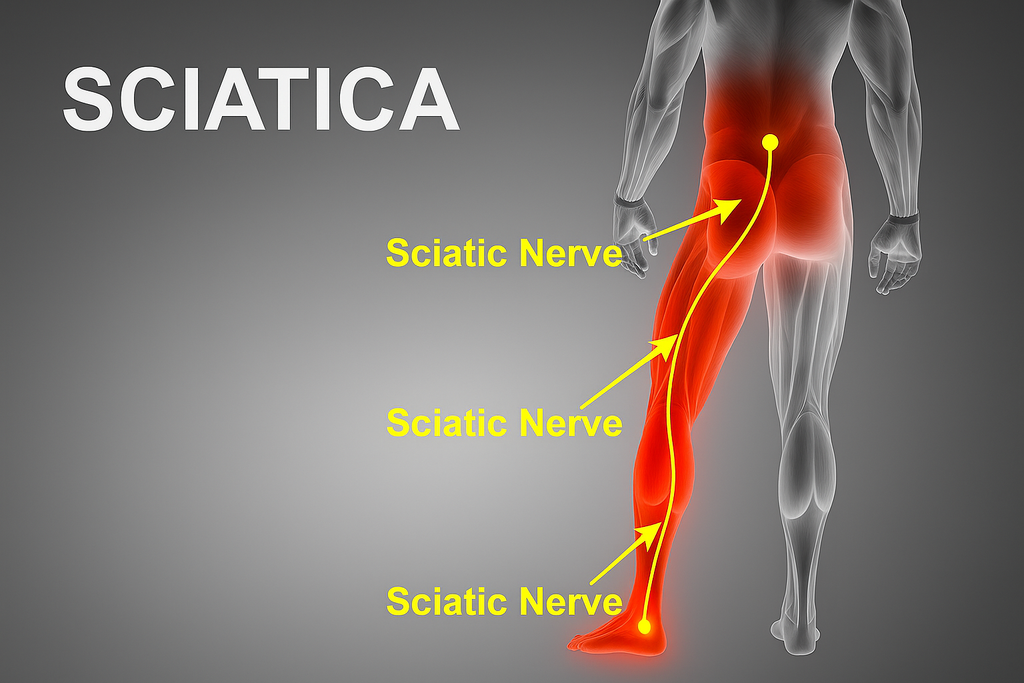Flat Feet Surgery: A Layman's Guide
Key Takeaways
- Surgery is rarely required for flat feet. It is an option of last resort, when all other options have been exhausted.
- About 90% of flat feet cases will be successfully resolved with conservative treatments, like the use of custom orthotics, exercise and physical therapy, weight management, medication, and some lifestyle adjustments.
- Surgery may only be considered when pain persists and even gets worse after up to six months of conservative treatment. It may also become an option if your daily activity is being severely hampered.
- A surgical intervention may require that different surgical procedures are combined to ensure the desired outcome. This will be determined by the surgeon.
- Understand the risks and recovery requirements before going for flat feet surgery. This will enable you plan adequately so nothing takes you by surprise.
Studies show that only about 13% of cases of flat feet require surgical intervention, with almost 90% of the cases being successfully addressed through non-surgical means.
However, in extreme cases where surgical intervention is required, there are a few surgical procedures that may be recommended. This article will explain all of these and more in detail so you can have a better understanding of the procedures.
What is Flat Feet?
Flat feet refer to a condition where the arches of the feet are undeveloped, underdeveloped, or collapsed. When this happens, the feet’s biomechanics is affected in the following ways:
· Loss of shock absorption – The spring-like action of the arch which provides shock absorption will be missing, resulting in greater stress on the legs from impact stress.
· Overpronation – The foot will roll inward as you walk or run, resulting in a misalignment among the different components of the biomechanical system, increasing stress on some parts
· Increase in leg fatigue, inflammation, and pains
· Poor gait
· Plantar fasciitis
· Knee, hip and back pains
· Shin splints
When Does Surgery become Necessary?

Conservative treatments, like the use of orthotics, is often enough for most patients. However, if a patient has been trying different conservative treatment options without seeing the desired result, the next option may be to go for surgical intervention.
That said, before a podiatrist or orthopedist will recommend flat feet surgery, they will recommend the following:
Custom Orthotic Insoles
Different from over-the-counter insoles, these custom orthotic insoles provide the best support for flat feet. Stride Soles’ custom insoles are designed through 3D scanning and printing to offer the exact arch support and more required by individual foot. Patients who have tried OTC options without positive results will often be advised to get custom insoles as they perform better.
Only after trying top-quality custom insoles, like what Stride Soles offers, for about 6 months without any positive result will other options be considered.
Physical Therapy and Exercise
This is often a complementary treatment to any of the options above. The goal here is to strengthen the foot and ankle muscles or to stretch a tight Achilles tendon.
Weight Management
Obesity is one of the main causes of flat feet which should be pretty obvious since the feet have to carry more weight than they should. If the fallen arch was caused by increased weight, then attempts will be made to bring the weight down to relieve the arch of the excess weight.
Medication
In cases where there is swelling and inflammation, doctors will prescribe anti-inflammatory medication to help reduce the inflammation and the pain.
Only after trying these treatment options for some months will surgery be considered.
Signs that Surgery May be Required

Having tried the treatment options listed above, you may just be headed for surgery if the following still persists after about 6 months:
· Chronic foot or ankle pain that makes carrying out your daily activities difficult or impossible
· The arch continues to collapse resulting in what is known as progressive flatfoot deformity
· Tendon dysfunction like PTTD (posterior tibial tendon dysfunction)
· Frequent ankle sprain or instability as you stand or walk
· The foot loses all flexibility, a condition known as Rigid Flat Feet
· You can no longer wear normal shoes because your feet have become deformed
· There is so much misalignment or degeneration that it results in arthritis
If these symptoms persist, then surgery may be the last option. The goal of any surgery will include:
· Relieving the patient's pain
· Restoring function to the foot
· Rebuilding the arch so it can perform its supportive function
· Improving the alignment of the different components of the biomechanical setup
· Preventing any further deterioration of the arch or its supporting muscles and tendons
Types of Flat Feet Surgeries

There are a number of different types of surgeries that are performed as treatment for flat feet. Each type of surgery addresses specific areas or issues. What surgical procedure will be recommended will depend on the patient’s unique situation. In some cases, some patients may even require a combination of different surgical procedures.
We will carefully look at some of the common surgical procedures that are often used for treating flat feet.
Tendon Repair or Reconstruction
As one of the main supports for the arch, the posterior tibial tendon can get damaged due to overuse, injury, or PTTD (Posterior Tibial Tendon Dysfunction. When this happens this tendon can get weak or even get torn which will result in flat feet. This procedure will be required to either repair or reconstruct it.
During the surgery, the surgeon makes an incision on the side of the feet to gain access to the tendon. Depending on the type of damage to the tendon, it might need to be stitched back together. In cases where the damage is extensive, some tissue may be grafted from another part of the body to reinforce or replace the section that is damaged.
In other cases, the tendon can be re-attached to a different bone from where it will have better leverage to be able to provide adequate support to the arch.
Osteotomy (Bone Cutting and Realignment)
This is a procedure that is mostly used to correct rigid flat feet caused by a misalignment of the bones. During the procedure, special tools are used to make cuts into the target bones. These are often the heel or midfoot bones. After the cut, the bone or bones are adjusted to achieve the natural arch.
To ensure that the bones remain in the new position through the healing period, the surgeon may use screws, pins, or plates to hold them in place. The patient may also have to wear boots or a cast to ensure limited movement of the bones so they can heal properly.
With the arch restored, weight is better distributed with better balance and stability achieved. Depending on the number of bones that were adjusted, recovery time may stretch into months.
Arthrodesis (Joint Fusion)
There are severe cases where joints have become too unstable or damaged that they are a constant source of pain. This condition, which can be the result of advanced flat feet or arthritis, can be treated using this surgical procedure.
The goal of the procedure is to prevent any movement of the affected joints, often the subtalar or talonavicular joints, so the pain associated with their movement is eliminated. To achieve this, the surgeon removes the cartilage between the affected joints and then holds the two ends together with the aid of rods, plates, or screws until they are fully fused.
The recovery process can take months. It begins with about 12 weeks of wearing a cast and then a lengthy period, usually months, of gradually returning the foot to weight bearing. When done right the pain is seriously reduced but the foot is left with a reduced range of motions.
Lateral Column Lengthening
The flattening of the arch can be influenced by the collapse of the outer side of the foot. When this is the case, this collapsed outer foot will need to be reinforced so it can come back to its natural state and thus provide the arch with the support it needs to maintain its shape.
This surgical procedure involves inserting a bone graft into the lateral column to lengthen it. The surgeon will cut the bone around the heel or midfoot bone area and then using the graft bone as a spacer, they will lengthen it and by so doing, elevate the arch.
After the surgery, the foot will require a period of between 6 to 8 weeks of no weight bearing. After this, supportive footwear and physical therapy may be required. When done right, the foot is supposed to have a more balanced structure.
Implant Insertion (Subtalar Arthroereisis)
This procedure is adopted when treating cases of flat feet where there is a collapse of the subtalar joint and the talus or excessive motion. The goal of this procedure is to reduce the excessive movement in the foot so that the arch can be restored and stability improved without having to perform any extensive bone cuts or fusion.
The procedure involves making an incision near the sinus tarsi, on the outer side of the foot, and an implant inserted into the sinus tarsi and placed in a position where it prevents the excessive rolling while allowing for some natural joint movement. The implants used are usually made of stainless steel, titanium, or bio-absorbable materials. The size of implant required is also predetermined through scans carried out prior to the procedure.
The recovery period for this procedure lasts for about 12 weeks. This includes about 2 weeks of wearing a cast or removable boots with little or no weight placed on the foot, another 4 weeks of boot wearing plus gradually putting some weight on the foot. Finally, there will be about 6 weeks of therapy to strengthen the muscles and gait improvement.
Soft Tissue Procedures
These procedures are used when the flat feet is caused by the surrounding soft tissues. These include ligaments and muscles. These tissues could be imbalanced or too tight, requiring some adjustment or release.
A number of procedures fall under this category and are used for different cases. Examples include:
· Achilles Tendon Lengthening - This is used when the Achilles tendon is tight, pulling the heel down and causing the arch to fall. It releases the tightness which helps the arch get back to its normal height.
· Posterior Tibial Tendon (PTT) Debridement - In this procedure, inflamed or damaged bits of the PTT are removed to ease pain levels and also improve its ability to support the arch.
· Ligament Release - This procedure releases tight ligaments to restore balance and achieve better alignment,
· Plantar Fascia Release - Here, the plantar fascia is released (when it is tight) to reduce strain on the foot and improve flexibility.
In a lot of cases, one procedure alone is not enough to correct the issue. This means that a combination of procedures will be required. To determine what procedure or procedures will be required, the surgeon will carefully examine MIRs and X-rays, and also consider factors such as the symptoms, age. and overall health conditions of the patient.
Preparing for Flat Feet Surgery
When preparing for this or any surgery, it is important that you have a comprehensive discussion with the surgeon. This should include a detailed explanation of the procedure(s) to be performed. You should ask about the risks involved, realistic outcomes, and recovery time.
During your initial examination and assessment, your medical history will have been taken and if you are on any medication that may impact the procedure, you will be asked to stop them. To be doubly sure, you can tell the surgeon any medications that you may be on.
It is important that you take enough time off work for the surgery. This is especially important for cases where your foot will need to be off weight-bearing for a while. This is why you should ask the surgeon how long recovery is supposed to take.
Possible Risks and Complications to be Aware of
As with every surgical procedure, there are some risks associated with these procedures. Some of them include:
· Infection – This is a common risk with most surgical procedures. It can however be prevented if proper hygienic standards are adhered to.
· Slow Healing – Patients who smoke or who have diabetes may heal a lot slower.
· Nerve Injury - Numbness or a burning sensation may occur as a result of injury or damage to a nerve. This may be experienced temporarily or, in rare cases, permanently.
· Blood Clots - The extended periods of immobility can result in blood clot. This can be prevented with compression or medication
· Over or Under Correction - The restoration of the arch may overshoot the mark or not achieve it. This will mean carrying out a corrective procedure
· Nonunion or Malunion - If the alignment of the bones shifts, they may not heal or fuse properly.
· Persistent Stiffness of Pain - Patients may continue to feel some discomfort even after healing is supposed to be completed.
All the risks listed above are avoidable. The best way to ensure that your procedure is free of any of these is to work with a highly skilled surgeon with a great track record.
[article_inline_cta]
Conclusion
Flat feet surgery is something that most people suffering from flat feet will never need. With great conservative treatments like Stride Soles custom insoles, you’re likely not to ever need any of the procedures described in this article.
That said, we’ve simply provided useful information that will give you an idea of what flat feet surgery is all about. This can help you ask the right questions so you can make informed decisions.




